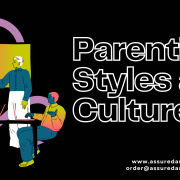Guerilla girls and art practice
The American collective of art advocates, formed in 1985 with just a two-fold goal to draw awareness to female artists and artists of color and expose the dominance of white males in art institutions. In 1985, the Museum of Modern Art in New York City held a large exhibition entitled ‘World Study of Visual art,’ which featured only 13 females out of a maximum of 169 creators. This imbalance has become the driving force behind the founding of a powerful and energetic advocacy group to fight discrimination and misogyny in the art world. Members of the party, women artists and art practitioners, kept it private and adopted the fake names of the talented artists of the old days. They examined data on prejudice and rendered their results known through flyers, which were carefully worded but showed a sarcastic twisted sense of humor.
The banners were bearing the legend, ‘Public Service Message from Guerrilla Girls, Consciousness of the Art World.’ Several of the topics they raised depict women’s exposure, disproportionate wages, shortage of success, lack of inclusion in fine arts, and concerns of job and life. Organizations actively donated gorilla costumes to display their banners in outdoor venues and hold demos at art exhibitions, (Cassandra & Gucik, 2015). The purpose of their established measurements was to provoke a reaction that might proceed to debate and transition in consequence. In addition to displaying and selling posters, they lectured widely and published books such as Guerrilla Girls’ Confessions (1995), the movement’s history, and Guerrilla Girl’s Bedside Companion on Western Art History (1998). By the mid-1990s, the group’s advocacy would have been introduced further than the art sector to meet many problems such as legacy admissions, environmental justice, abortion, and theater. As a consequence, in 2001, the organization was divided into three separate entities: Guerrilla Girls on Tour, a touring theater group; Guerrilla Girls BroadBand, a digital media company; and Guerrilla Girls, Inc., a reiteration of the initial exhibition group.
What makes guerilla girls group a ‘new artists’ group
Progress and accessibility to technologies have allowed virtual arts programs to be much more common in children. While it appears to be a modern platform for art educators and pupils, it has been in the art world and has been for some period. In reality, one of the first significant computer art displays occurred in 1965. Since technology continues to improve, graphic design has taken on many forms over the years. One constant, however, was the development of digital media by artists as a medium of expression, (Blankenship, 2018). Currently, media attention based on maintaining the art industry responsible is in everything: from immensely popular social media sites like Diet Prada to content providers like Hyperallergic.” Earlier in 1985, there has been no fine art reporting. There have been two or five glossy publications that were commercial publications, and they literally wrote puffs for their marketers,” said Frida Kahlo, co-founder of Guerrilla Children.
The group has adapted the use of the Internet in promoting internet art. Through social media usage, the group has increased its media coverage and its activities, influencing the world. This type of art has overridden the conventional domination of the gallery and museum process by offering esthetic interaction over the Internet. Internet usage has become the new way to drive a conversation at a fast rate quickly. Many people use the Internet daily; this makes the venue the best place to discuss different groups’ grievances and gain massive public support.
Of course, that is not her real identity. She embraced this identity as the first illustrator group’s creator to entirely circumvent the art industry’s system. The Guerrilla Girls are somewhat of a mystery to anti-establishment art appreciation enthusiasts. “The influence in the art world was mainly white males. They, in addition, are drawn to jobs that they can connect to it because of their cultural values and practices. It’s not incorrect, it’s restricted. The customers purchasing the art seem to be the same audience, and the people writing more about art could only comment about its art that is seen and sold,” said Alice Neel, one of the first anonymous artists hired to join the Girls, immediately after the formation of the organization. Even after almost 35 years, the art industry still counts on its inability to fix inclusion and inclusion problems.
The group does inspiring projects.
The group uses art mixed with humor to pass their point; the group’s major project, which has inspired many people, is the usage of the billboard to demonstrate how male artists dominate the art industry while women are used to posing as a canvas. Only a small percentage of women are artists, while most of the artwork done by men illustrates 85% nude artwork of women’s bodies, (Maniak, 2018); the question posed is: will women only be able to participate in art if they are nude? The very most popular quote is a 1989 poster of an armrests naked female sporting a gorilla mask, asking, “Do women have to be naked to get to the Met Museum? “More than 5 percent of the artists in the modern art segment are women, but 85 percent of the nude is female.”
The organization focuses on museum committees, one that has lately come under criticism, such as museums which severed relations with the Sackler family, who are connected to the current drug epidemic, or the Warren Kanders former chairman of the Whitney Museum of American Art, who quit last year in a dispute about his relation to arms manufacturing. Lately, Tom Gores, a retired member of the Los Angeles County Museum of Artboard, withdrew once it was discovered that he had engaged in a telecommunications business that paid unauthorized fees to prison inmates.
This is inspiring as the group is trying to mitigate the usage of the human body to develop and promote the careers of men and uprooting corrupt and morally wrong board members. Leaders should be morally upright for them to ensure that they lead with a clear conscience.
Exhibition of Guerilla Girls work of art
The groups’ work of art is exhibited in different galleries across the country, such as Mason Gross School of the Arts, Krannert Art Museum.
Challenges faced by Guerilla Girls
A few other Guerrilla Girls who have been women of color often encountered a variety of obstacles. Given Guerrilla Girls’ stand opposing reverse racism, some vibrant artists have left Guerrilla Girl involvement owing to virtue signaling, silence, indifference, and revisionism. As a black female, “Alma Thomas” explains how awkward she was sporting Guerrilla Girls’ iconic gorilla mask. “Thomas” recalls that no attempt has been made to consider the problems of color artists. “Their white privilege is such that the they did not realize that blacks had been placed in a different environment in the art market, that young black artists and black woman artists had been fully isolated, fully divided to this day. “Ultimately, this pervasive hostility contributed to several “color artists [exiting] after several sessions because they could perceive the unspeakable inequality in the group.”
References
Cassandra, R., & Gucik, L. (2015). Women street artists of Latin America: Art without fear. Manic D Press.
Maniak, K. (2018). Guerrilla Girls: Invisible Sex in the Field of Art. Studia de Arte et Educatione, 13(264), 87-95.
Blankenship, E. (2018). All Is Fair in Love and War: An Exploration of the History, Tactics, and Current Status of the Guerrilla Girls.










